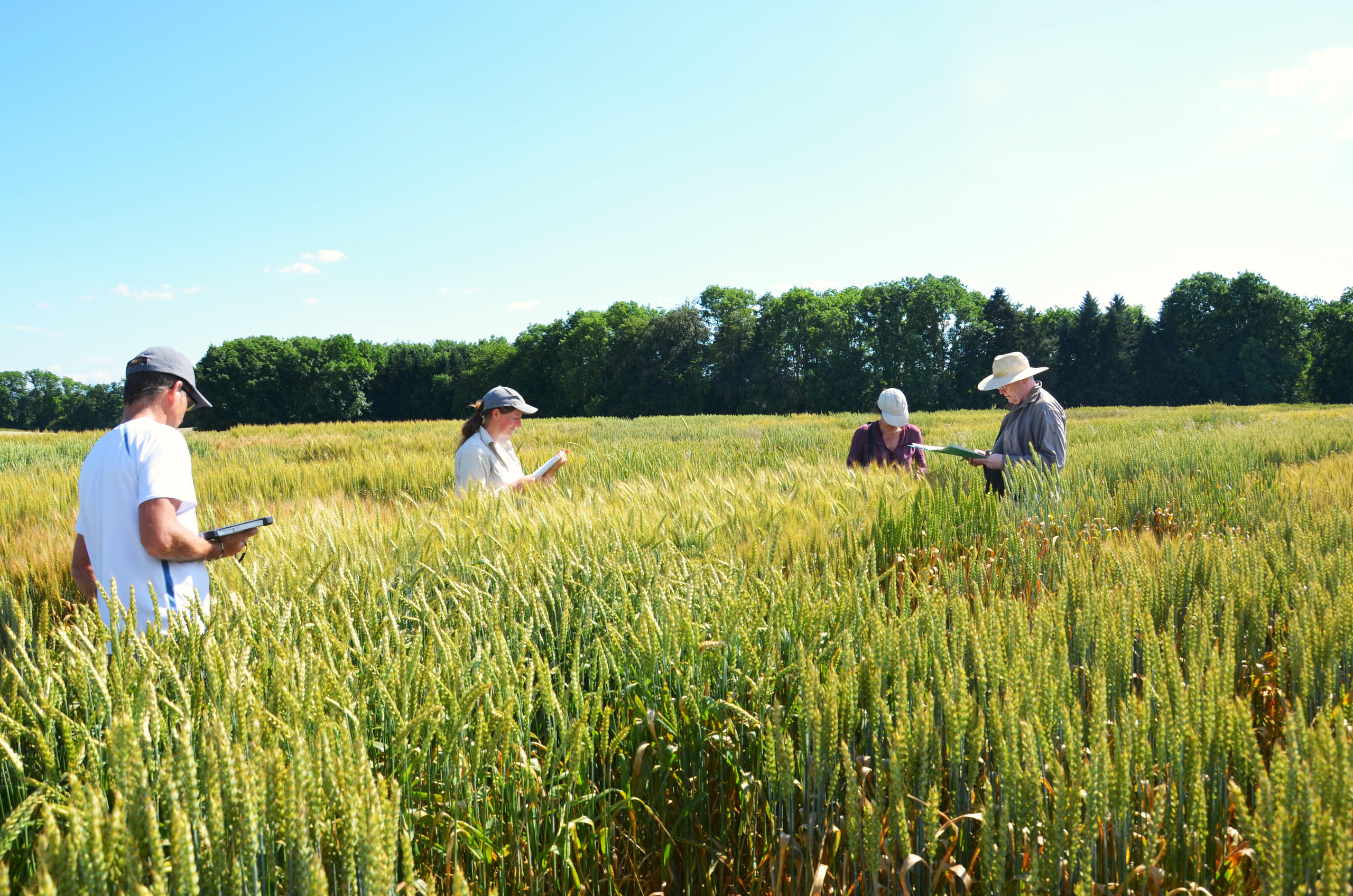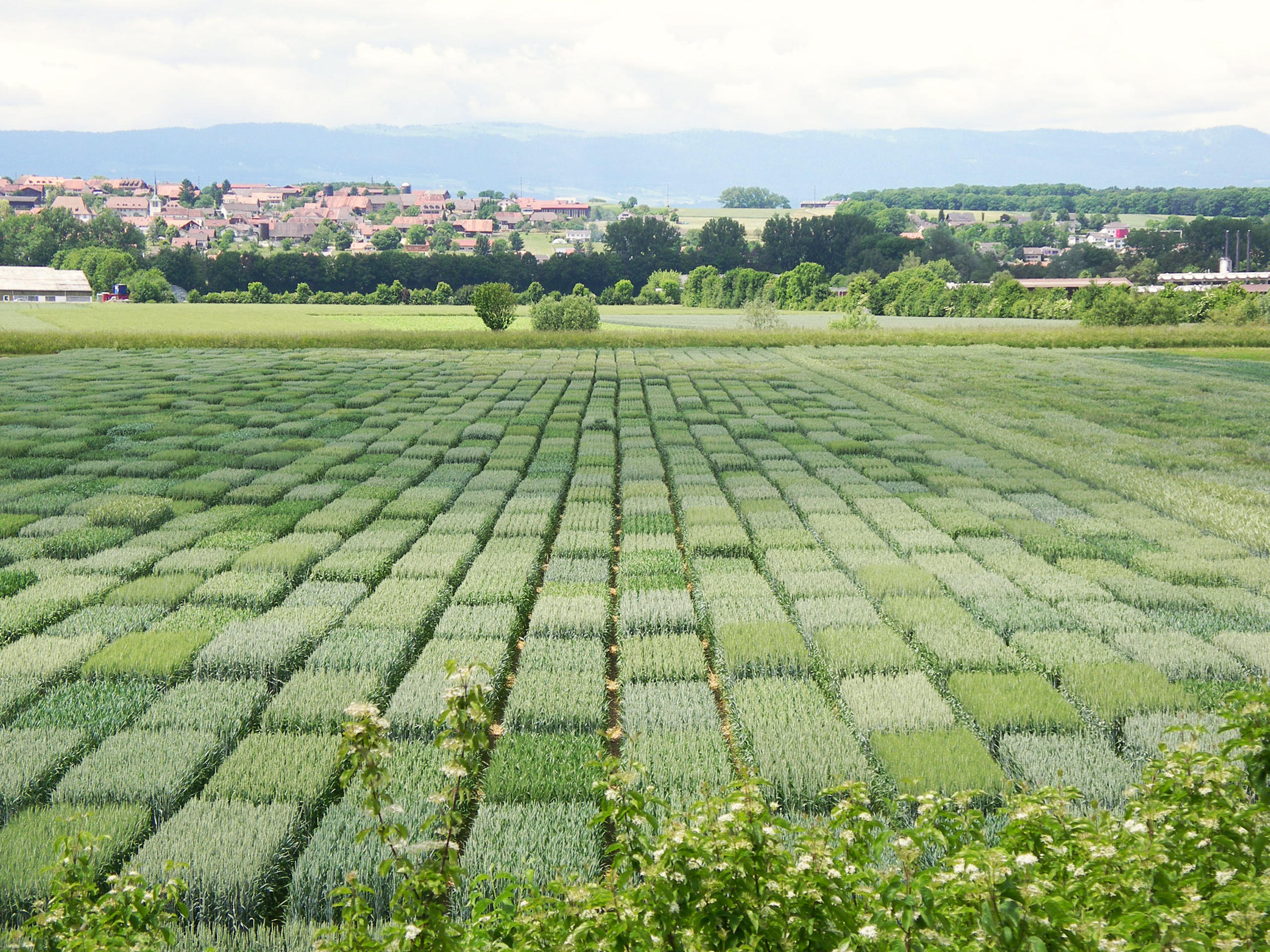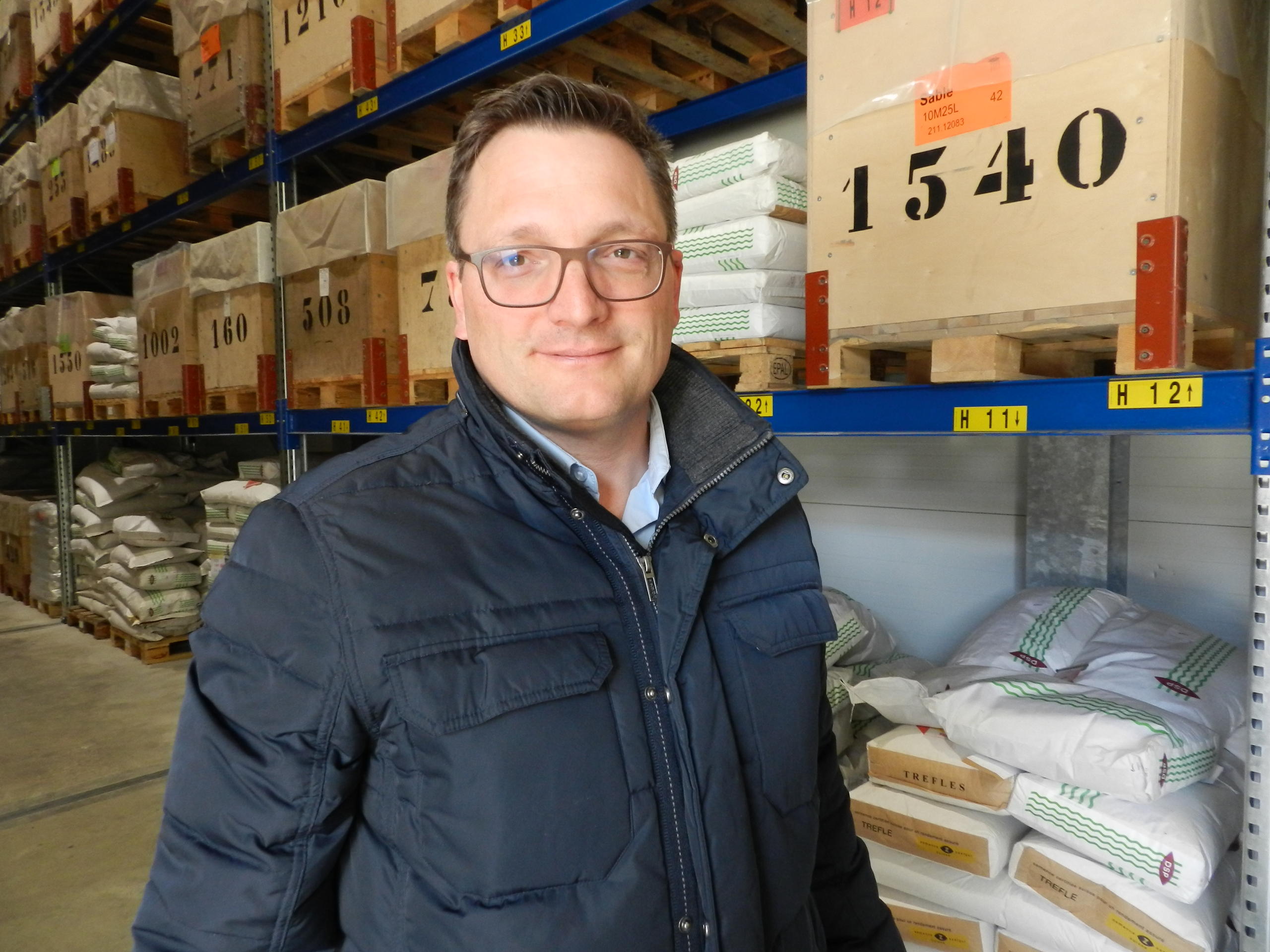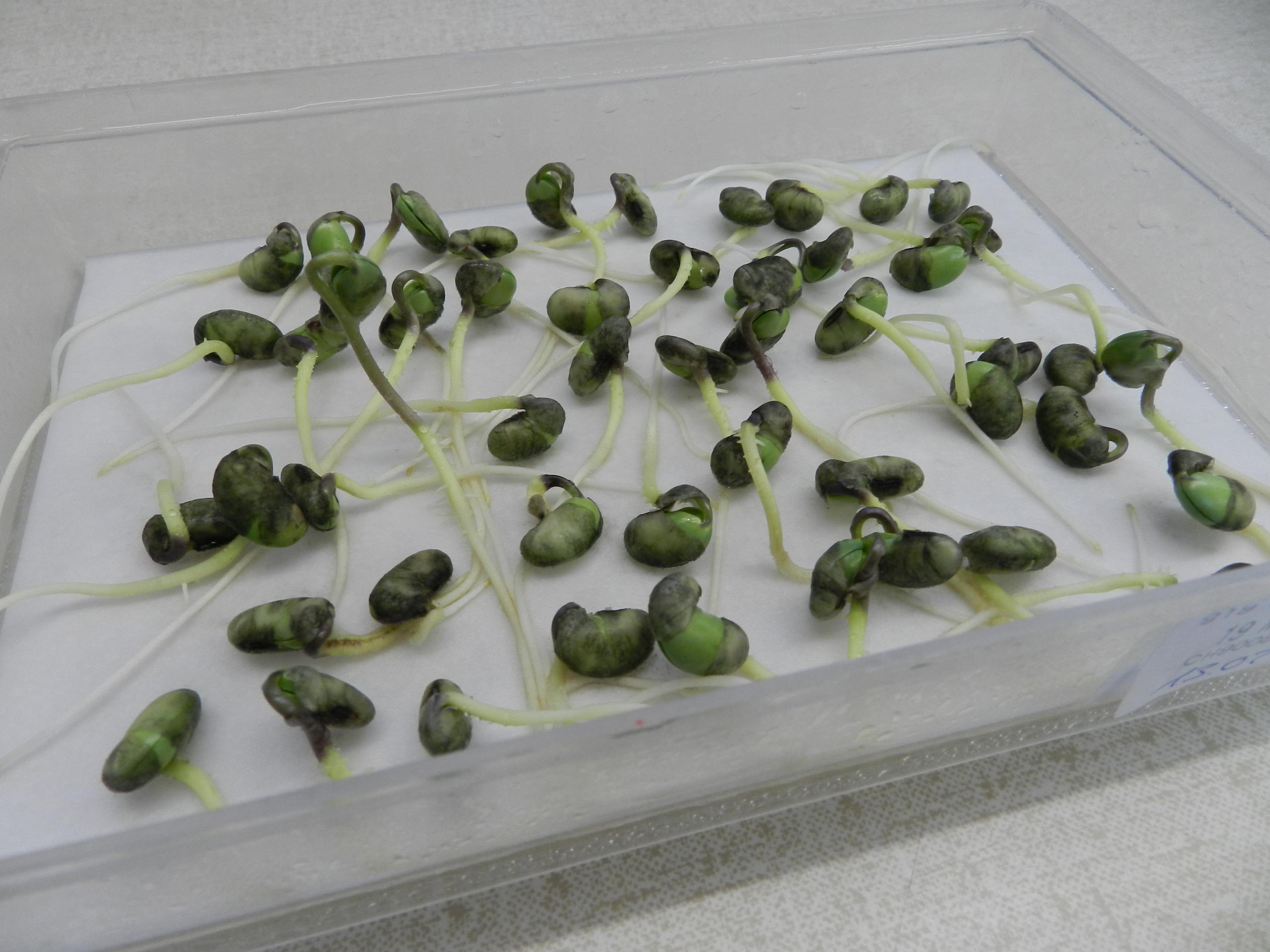
Why we need to know more about wheat, and faster

If current experiments can speed the development of hardier varieties of wheat, we may be a step closer to achieving a world without hunger or malnutrition. That’s why Swiss researchers are working to develop a genetic fingerprint to predict yields and resistance.
Names like Nara, Baretta und Montalbano appear on the list of 57 varieties of wheat developed in Switzerland for the national and international market. Each entry in the catalogue represents 10 to 15 years of work by Swiss plant breeding experts, but new high-tech methods promise to shave years off the process.
This progress is fortunate because time is of the essence. Along with rice and corn, wheat is one of the “big three” crops that continue to provide more than half the calories consumed in the world today. But these crops are under threat; from disease, pests and adverse weather conditions, all intensified by the climate emergency.
The trouble, according to Achim Walter, professor of crop science at the Swiss Federal Institute of Technology Zurich (ETH Zurich), is that the variety of genotypes – or genetic profiles of wheat plants – is scant.
“We need more plant species if we are to feed the world, and we need more resistant varieties of these species. Moreover, the varieties must be of top quality and yield, conserve soil and water, and require as little fertiliser and pesticides as possible.”
High stakes
With the global population predicted to reach or exceed 10 billion by 2050, and a third of agricultural land classified as degraded, the stakes are high. The Food and Agriculture Organization of the United Nations (FAO) has stated that innovation in general and particularly in agriculture “is the central driving force for achieving a world without hunger or malnutrition”.
Plant breeding, using both long-standing and cutting-edge technology, is one area of innovation where a significant contribution can be made towards more sustainable agriculture. Roland Peter, head of plant breeding at the Swiss federal body for agriculture research, Agroscope, says Switzerland already has a head start.
“In Switzerland, we have always put a lot of effort into breeding for disease resistance. This enabled extensive cultivation programmes, where farmers do not spray, to take off.”
A reduction in spraying is good for the farmer’s pocket and good for the environment – if the resistance package works.
Much of the fieldwork is carried out in the flat countryside on the south shores of Lake Neuchâtel by a small company that works in collaboration with Agroscope. Delley Seeds and Plants (DSP), owned by the Swiss seed producers’ association, Swisssem, is the co-owner of the wheat varieties from Agroscope’s breeding programme.

Selection
It currently takes breeders 10 to 15 years to reach the point where a new variety of wheat can be certified. At the same time, existing varieties have to be monitored so that they remain stable every year, so-called maintenance breeding. DSP also breeds and distributes varieties of soya, maize, fodder crops and vegetables.
In his role as breeding manager at Agroscope, Roland Peter tries to ensure a good flow of information between the laboratory and the field. He notes that classical breeding and molecular methods are already being used together with the potential to shorten field testing time. “With partners such as Uni Zurich and ETH Zurich we are working on developing molecular markers for specific traits – for example disease resistances. Those markers tell us if a resistance is present in a plant or not, like little flags. Then we can use them in the routine breeding.”
Recently Agroscope and ETH Zurich have been concentrating on genomic selection. This technology is still a conventional breeding technique. There is no genetic modification or “editing” involved, just reading a plant’s genome at many positions and comparing it to others.
“The goal is that we can predict the traits of a given plant. There are tens of thousands of markers which together form a genetic profile of the plant. If we can combine this information with our observations in the field in a smart statistical model, we expect to predict a given trait for any plant with a fast and cheap genetic fingerprint. Being able to predict yield, quality, agronomic traits for any new plant immediately, without testing it in laborious field trials, would be the time-saving jackpot.”
The first rounds of application have been “very encouraging”.

Political backing
Christian Ochsenbein of DSP has noticed a tendency in recent years towards international consolidation and privatisation in the seed sector. “Big companies like Syngenta/ChemChina, Bayer CropScience, Corteva Agriscience and DLF have been buying up small operators. We are independent and oriented to Swiss needs, a role that has been recognised more and more by politics in recent years.”
Earlier this year, the Swiss government presented its new agricultural strategy for 2022-2025External link, which aims to shrink the sector’s ecological footprint. It provides for an extra CHF5 million ($5.2 million) per year to be invested in the “breeding programme for strategically relevant agricultural crops, as well as for the creation and operation of a competence centre [network] for plant breeding”.
The annual value of the agricultural sector for plant production is more than CHF4 billion.
Winds of change?
As for the future, Agroscope is keeping an eye on advances in new breeding technologies such as genome editing, which is currently regulated as GMO and therefore under a moratorium for field cultivation in Switzerland due to a popular vote in 2005.
The boundaries between the products of these new breeding techniques and conventionally bred plants have grown increasingly blurred and many countries outside Europe have adopted some of these techniques as conventional without the need for label declaring them as such.
The EU Commission has set up a policy study to determine the status of these new breeding methods in Europe, to shape future legislation. The study is due to be delivered next year.
Meanwhile, Swiss experts continue to test the opportunities and environmental risks posed by the prototypes of these new breeding technologies in the laboratory, greenhouse and field. Because of the moratorium, in place until 2021, the fieldwork takes place on a protected site. It looks unlikely that the Swiss position will change when the moratorium comes up for renewal next year.


In compliance with the JTI standards
More: SWI swissinfo.ch certified by the Journalism Trust Initiative






























You can find an overview of ongoing debates with our journalists here . Please join us!
If you want to start a conversation about a topic raised in this article or want to report factual errors, email us at english@swissinfo.ch.